Fortunately for those of us who live in Winston-Salem, the word “disaster” has not been used many times over the years to refer to a local event.
But for Winston-Salem residents living downtown in 1904, if they were lucky, they lived through the city’s worst disaster on a Wednesday morning, November 2nd, 1904.
Unfortunately, some residents were not lucky. This is how the events unfolded 114 years ago.
Early Winston residents needed a reliable water supply, particularly as more and more businesses were established in town. A reservoir was constructed at what was considered to be the highest point in town – at Trade and Eighth Street in 1882. It was surrounded by small tenant houses.
The reservoir was made of concrete and brick, and it was substantially enlarged in 1894. The reservoir had leaked for years and people living near the reservoir had complained for years. In fact, Mrs. Angelica Francisca Hine Burkhart (Martin) Peebles*, who lived next to the reservoir, sued the city in 1898 for damages caused by the reservoir leaking on her property. She was awarded $450 in damages.
A new standpipe was completed on October 12, 1904 directly behind the reservoir and both the reservoir and the standpipe were filled to capacity.
Three weeks later, at 5:00 on the morning of November 2, 1904, the northern wall of the reservoir collapsed, sending concrete, bricks, and 800,000 gallons of water into the street. Some people thought the sound of the crash was an earthquake.
People were crushed in their homes, under the concrete, and others were swept away by the powerful force of the water.
The fire alarm rang about 6:00 in the morning from Town Hall and hundreds of people rushed to the reservoir to assist the injured and to locate missing people.
When the concrete settled and the water stopped flowing, nine people (eight of them women) had been killed, including Mrs. Peebles. The other people who died are: Laura Ann Meredith Poe, Mary Caroline Poe, Selena Vogler, Louise Southern, William or John Southern, Octavia Bailey, Lucile Malone, and Caroline Martin. Several people, including Mr. Peebles and his son, were injured, and many homes were collapsed or washed away.
Some bodies were recovered at the railroad tracks, which were littered with water and debris.
Mayor Oscar Eaton met with the Board of Aldermen in Town Hall at 9:00 that morning. He was authorized to provide payment for rebuilding the homes, burying the dead, and treating the injured at the Twin City Hospital.
The damaged reservoir was replaced with a standpipe, which can be seen in the background of the above photo. The ruins of the reservoir gradually faded from the landscape and small businesses claimed the neighborhood. There were several lawsuits instituted against the city of Winston as a result of the reservoir disaster. Newspaper headlines called this event Winston-Salem’s worst disaster and it retains this title today.
Today, this section of Trade Street is a busy intersection, near an entertainment venue and other businesses.
*Various spellings for the last name, such as Peoples, Peeples, and Peebles.
Black and white and sepia photos courtesy of Forsyth County Public Library Photograph Collection. Color image is courtesy of Molly Grogan Rawls.
Stay tuned for the next historical post on November 8th.

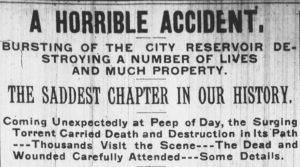
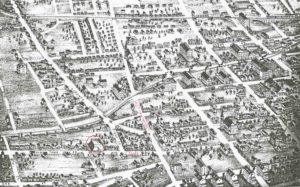
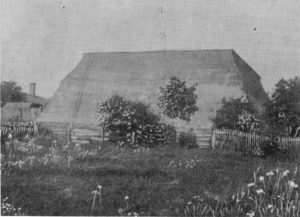
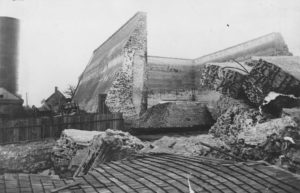
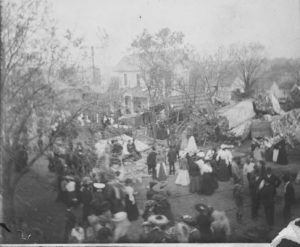
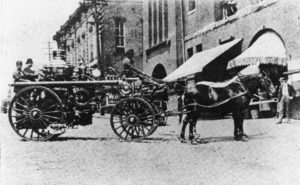
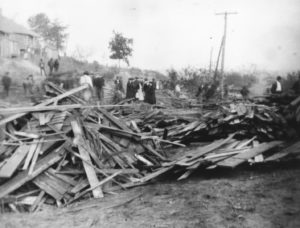
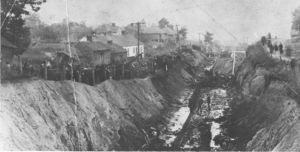
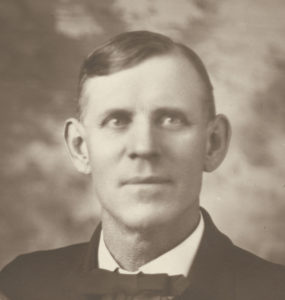
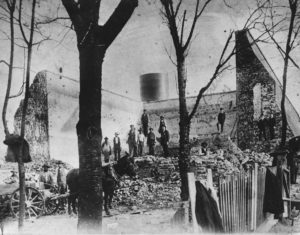
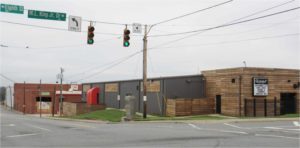

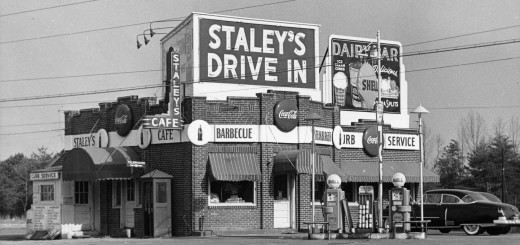
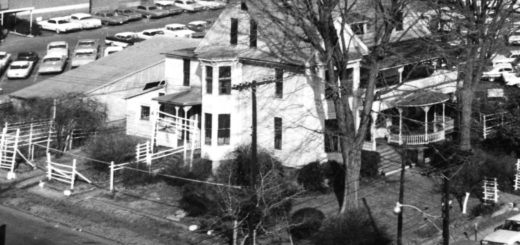
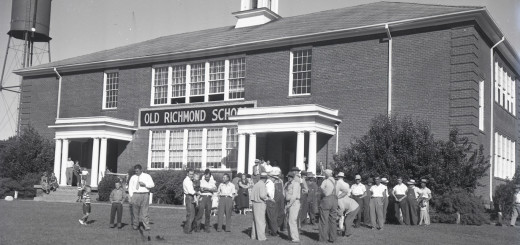
I had never heard of this disaster. So tragic.
I stumbled upon your website doing internet research for a book, and as a Forsyth County resident, I am fascinated with all the great information you’ve provided here. Thank you.
I am astounded I never heard of this disaster until a genealogist mentioned it because a surname name we research was included in the deceased. Our ancestors were in the first wagon-train to settle in Salem, etc. This disaster has somehow fallen from history. We knew the area became a place were farmers had their markets, – then ‘City Market’ etc. but have never heard mention of what preceded it. Thank you for bringing it to light.